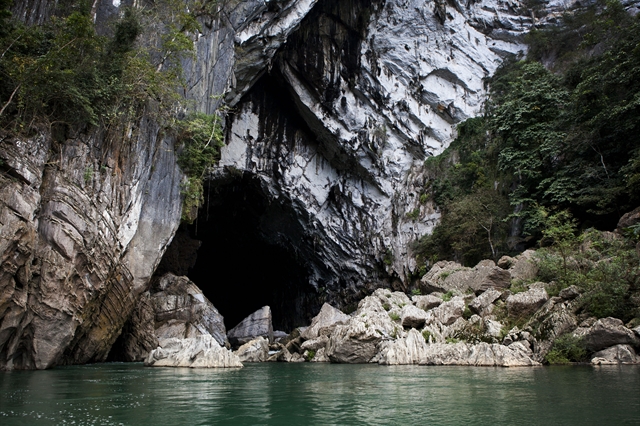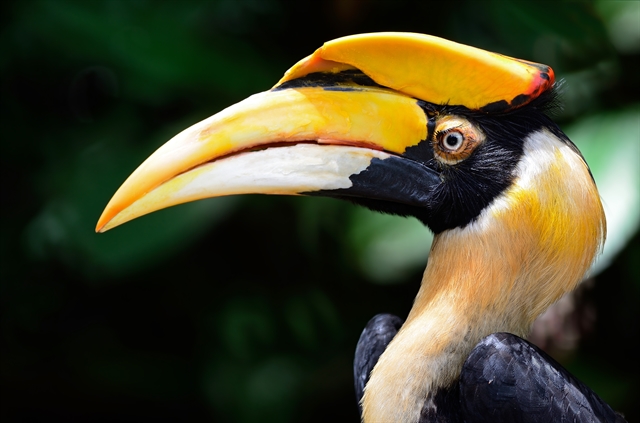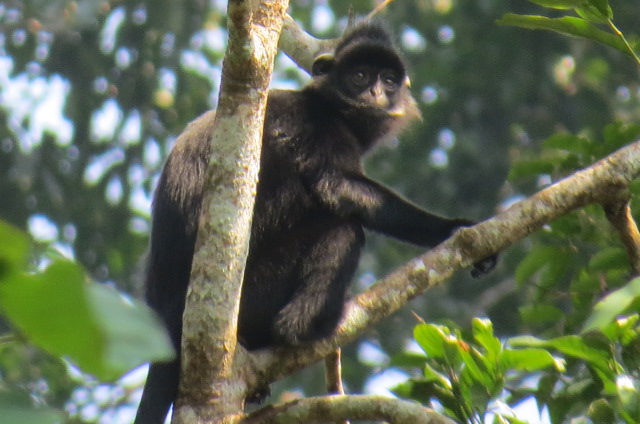 Life & Style
Life & Style

Phong Nha-Kẻ Bàng National Park of Việt Nam and Hin Nam No National Park of Laos have been officially recognised as the first transboundary natural world heritage site in Southeast Asia by UNESCO.
Việt Nam News reporter Lương Hương speaks to Lao Ambassador in Việt Nam, Khamphao Ernthavanh, about the significance of the recognition and future measures to protect the heritage.

|
| Lao Ambassador in Việt Nam, Khamphao Ernthavanh. — Photo courtesy of Lao Embassy in Việt Nam. |
How did you feel when UNESCO officially recognised Phong Nha-Kẻ Bàng National Park (Việt Nam) and Hin Nam No National Park (Laos) as the first transboundary World Heritage sites of the two countries?
Hin Nam No National Park is the first natural world heritage site of the Lao People's Democratic Republic, located adjacent to Phong Nha-Kẻ Bàng National Park, a world natural heritage site of the Socialist Republic of Việt Nam.
The nomination of Hin Nam No National Park as a world heritage site has taken years and represents a significant milestone, not only for Laos-Việt Nam’s cooperation but also as a shared pride of humanity.
I feel incredibly moved and honoured to witness this achievement, as it is the culmination of persistent effort, close collaboration, and the determination of both countries over many years. This heritage is not only an invaluable gift from nature but also a vibrant testament to the special solidarity, friendship, and effective cooperation between the two countries.
I believe that this recognition will open up many new opportunities for cooperation in conservation, scientific research, community education, and sustainable tourism development, bringing tangible benefits to the people of both countries. For me personally, this is one of the most memorable moments of my tenure in Việt Nam, as it reaffirms the importance of cultural diplomacy and demonstrates the power of collective efforts to protect our shared values of humanity.
What does UNESCO's recognition mean for Laos specifically and for the cultural relationship and cooperation between Laos and Việt Nam in general?
UNESCO's official recognition of Phong Nha-Kẻ Bàng National Park and Hin Nam No National Park as the first transboundary world natural heritage site carries profound significance.

|
| Xebangfai Cave in Hin Nam No National Park. — Photo courtesy of Laos Embassy in Việt Nam. |
The Lao Party and Government always prioritise the values of cultural, historical, and natural heritage, focusing on the protection, conservation, and promotion of national heritage for sustainable development. The potential of cultural, historical and natural heritage contributes to the socio-economic development of the country and serves as a motivation for further development in Lao society. This approach safeguards and enhances the cultural, historical, and natural identity of Laos, turning it into a valuable national heritage resource that attracts both domestic and international visitors for exploration, research and experience of Laos's rich culture, history and nature.
This is a great source of pride as a part of the territory, ecosystem, and unique biodiversity values of the country is recognised and honoured by the international community. This not only enhances Laos's position and image on the global stage but also opens up opportunities for sustainable ecotourism development, linking nature conservation with socio-economic development for local communities.
For the Laos-Việt Nam relationship, this is a vivid testament to the effective and mutual trust-based cooperation between the two countries, especially in the areas of nature conservation, environmental protection, and cultural diplomacy. It demonstrates the support and strong relationship between the two brotherly nations. It also makes a significant contribution to enhancing and building the great friendship, special solidarity, and comprehensive cooperation between the two Parties, the two States, and the peoples of Laos and Việt Nam, making it increasingly robust and enduring.
I believe that this event will open a new chapter for bilateral cooperation, not only in conservation and scientific research but also in cultural exchange, community education, and linked tourism development. This is also a powerful message to the world that Laos and Việt Nam always stand together, protecting and promoting shared values for the benefit of future generations.

|
| Karst in Hin Nam No National Park. — Photo courtesy of Laos Embassy in Việt Nam. |
How has the local community been preparing to participate in the protection and management of this heritage?
From the very beginning of the UNESCO nomination process, the government of Khammouane Province, the Ministry of Natural Resources and Environment of Laos, along with international organisations and Việt Nam, have placed special emphasis on the role of the local community.
The local people living around Hin Nam No National Park have participated in training programmes to raise awareness about the value of heritage, conservation laws, and skills in forest management and biodiversity monitoring. Community patrol teams have been established to both protect the forest and prevent illegal hunting, serving as a bridge between the government and residents.
In addition, sustainable livelihood models such as community-based ecotourism, medicinal plant cultivation and handicraft production have been implemented to both increase income and reduce pressure on forest resource exploitation.
More importantly, the government and supporting organisations have created mechanisms for people to participate directly in the decision-making process, from developing management plans and monitoring to evaluating conservation effectiveness. This enables each individual not only to be a 'beneficiary' but also to truly become a 'co-owner and co-protector' of this valuable heritage.

|
| Hin Nam No National Park is home to various wildlife species, including the Great Hornbill. — Photo courtesy of Laos Embassy in Việt Nam. |
What is the potential for sustainable tourism from the recognition of this heritage?
Hin Nam No National Park will play a significant role in attracting domestic and international tourists to explore the culture, history and nature of Laos in general, and Khammouane Province in particular, thanks to its outstanding natural features such as kayaking along the Xebangfai River and through the Xebangfai Cave. Being recognised as a world heritage site can affirm that comprehensive sustainable development will occur around Hin Nam No National Park through a public-participation sustainable tourism management plan.
This will encourage job creation and sustainable production for local people. The specialised tourism sector at Hin Nam No National Park includes specific tourism programmes and activities related to protecting and promoting natural science values through sustainable tourism activities and public participation, such as hiking and kayaking tours of Xebangfai Cave.
To attract tourists and generate income for both countries, I believe that in the future, once we have a world-recognised natural tourism destination connecting the borders of the two countries, stakeholders from both sides will need to work closely together to create and widely promote natural and ecological tourism activities.

|
| The Hatinh Langur is a critically endangered primate species native to central Việt Nam and Laos, including areas around Hin Nam No National Park. — Photo courtesy of GIZ |
What measures will be implemented to preserve and promote the value of this transboundary heritage site?
To ensure the management, protection and promotion of the shared Lao-Việt Nam cross-border heritage, the Lao People's Democratic Republic will adhere to the principle of conserving the outstanding values of the heritage.
The Management Board of Hin Nam No National Park and relevant organisations in Khammouane Province, Laos, will collaborate with the Management Board of Phong Nha-Kẻ Bàng National Park and related organisations in Quảng Trị Province, Việt Nam, in managing the two national parks.
This will ensure compliance with the regulations of the UNESCO 1972 Convention on the Protection of World Cultural and Natural Heritage, the implementation guidelines of the 1972 Convention, relevant laws of both Vietnam and Laos, as well as the protocol on the border and national boundary markers between the Socialist Republic of Việt Nam and the Lao People's Democratic Republic and the agreement on border management and border gates between the governments of Việt Nam and Laos dated March 16, 2016.
Additionally, both sides need to implement a coordinated set of measures such as strengthening bilateral cooperation, conserving ecosystems and biodiversity, promoting the role of local communities, educating and raising awareness and developing sustainable tourism
With this comprehensive approach, I believe that the Hin Nam No – Phong Nha-Kẻ Bàng heritage will be preserved intact for future generations, while also becoming a strong bridge for cooperation between the people of Laos and Việt Nam. VNS